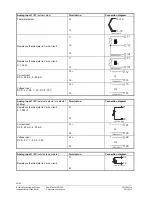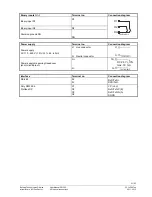
34/93
Building Technologies Division
User Manual RWF55...
CC1U7867en
Infrastructure & Cities Sector
5 Operating modes
05.11.2013
5.6 Response
threshold
(q)
The response threshold (q) defines for what period of time and how much the actual
value is allowed to drop before the system switches to high-fire operation.
An internal mathematical calculation using an integration function determines the sum
of all areas qeff = q1 + q2 + q3 as shown in the graph. This takes place only when the
control deviation (x-w) falls below the value of switch-on threshold
HYS1
. If the actual
value increases, integration is stopped.
If
qeff
exceeds the preset response threshold (q) (can be adjusted at the parameter
level), this causes the second burner stage to switch on or – in the case of the 3-
position controller/modulating controller – the controlling element to open.
If the current boiler temperature reaches the required setpoint,
qeff
is reset to 0.
7866d09e/0412
q
q
q
q
Temperature (°C)
Figure 17: Control sequence response threshold (q)
In contrast to time-dependent switching on, load-dependent switching on offers the
advantage of capturing the dynamics of the actual value.
Also, monitoring the progression of the actual value during the change from low-fire to
high-fire ensures low switching frequencies to reduce wear and to extend running
times.
The response threshold (q) also works (in the reverse sense) in the case of cooling
mode.
Cooling controller
















































